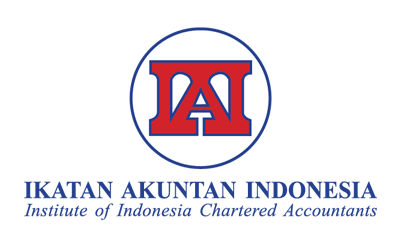TEORI AKUNTANSI: TELAAH LITERATUR TERHADAP TEORI NORMATIF DAN TEORI POSITIF
Abstract
Full Text:
PDFReferences
Anderson, R. W. dan S.Sundaresan. 1996. Design and valuation of debt contracts. Review of Financial Studies, 9(1):37–68.
Christenson, C.. 1983. The Methodology of Positive Accounting. The Accounting Review. January 1983, pp. 1-22
Crocker, K. J. dan J. Slemrod. 2006. The economics of earnings manipulation and managerial compensation. NBERWorking Papers 12645, National Bureau of Economic Research, Inc.
Dichev, I.D. dan D.J. Skinner. 2002. Large-Sample Evidence on the Debt Covenants Hypothesis. Journal of Accounting Research. Vol. 40, Iss. 4: 1091.
Fan, Y., A. Barua, W.M. Cready, dan W.B. Thomas. 2010. Managing Earnings Using Classification Shifting: Evidence from Quarterly Special Items. Accounting Review, Vol. 85, No. 4, pp. 1303– 1323
Financial Accounting Standard Board. 1978. Objective of Financial Reporting by Business Enterprises. Statement of Financial Accounting Concept No. 1 (FASB)
Francis, J., R.L. Fond, P.M. Olsson, dan K. Schipper. 2004. Costs of Equity and Earnings Attributes. The Accounting Review 79, 4; 967-1010
Hayes, R. M. dan S. Schaefer. 2000. Implicit contracts and the explanatory power of top executive compensation for future performance. RAND Journal of Economics, 1(2):273–293.
Healy, P. M. 1985. The effect of bonus schemes on accounting decisions. Journal of Accounting and Economics, 7(1-3):85–107.
Healy, P. M. 1999. Discussion of earnings-based bonus plans and earnings management by business unit managers. Journal of Accounting and Economics, 26(1-3):143 – 147.
Jensen, M. C. dan K.J. Murphy. 1990. Performance pay and top-management incentives. Journal of Political Economy, 98(2):225–64.
Kieso, D.E., J.J. Weigandt, dan T.D. Warfield. 2011. Intermediate Accounting. IFRS Edition. John Wiley and Sons.
Kim, D. dan Y. Qi. 2010. Accruals Quality, Stock Returns, and Macroeconomic Conditions. Accounting Review, Vol. 85, No. 3: 937–978
Lev B. 1979. The Impact of Accounting Regulations on the Stock Market: The Case of Oil and Gas Companies. The Accounting Review. Vol. 54, Iss. 3: 485
Li, T. 2009. Earning Quality and Corporate Governance. Master Thesis of Accountancy. Tilburg University. http://ssrn.com/abstarct=1417225
Littlejohn, S. W., dan K. A. Foss. 2008. Theories of Human Communication. Ninth Edition. Belmont, California, USA: Thomson Higher Education.
Mattesich, R. 1972. Methodological Preconditions and Problems of a General Theory of Accounting. The Accounting Review. (July, 1972): 469-487
Ross, A S.. 1973. The economic theory of agency: the principle problems. American Economic Review. Vol. 63. No. 2: 134-139.
Scott, W. R. 2009. Financial Accounting Theory. 5 edition. Prentice Hall
Sutopo, B. 2002. Topik-topik penelitian akuntansi. Akuntabilitas. Volume 1, No. 2, hal. 1 – 12.
Suwardjono. 2005. Teori Akuntansi, Perekayasaan Pelaporan Keuangan. Edisi ke 3. Yogyakarta: BPFE.
Watts, R. L. dan J.L. Zimmerman. 1978. Towards a positive theory of the determination of accounting standards. The Accounting Review, 53(1):112–134.
______. 1986. Positive Accounting Theory. Englewood Cliffs, New Jersey: Prentice Hall, Inc.
______. 1990. Positive Accounting Theory: A Ten Years Perspective. The Accounting Review. January, 1990: 131-156.
Wolk, Harry I. dan M. G. Tearney, 1997. Accounting Theory, A Conceptual and Institutional Approach. Fourth Edition., Cincinnati, Ohio: South-Western College Publishing.
DOI: https://doi.org/10.35591/wahana.v16i1.69
Wahana: Jurnal Ekonomi, Manajemen dan Akuntansi
ISSN : 2685-1415 (Online) | 1410-8224 (Print)
Published by Pusat Penelitian dan Pengabdian Masyarakat Politeknik YKPN Yogyakarta.
Jl. Gagak Rimang No. 2-4 Balapan, Yogyakarta 55222
Phone (0274) 560159, 562317, 513413, 563516 Fax. (0274) 561591
 This work is licensed under a Creative Commons Attribution-ShareAlike 4.0 International License.
This work is licensed under a Creative Commons Attribution-ShareAlike 4.0 International License.













